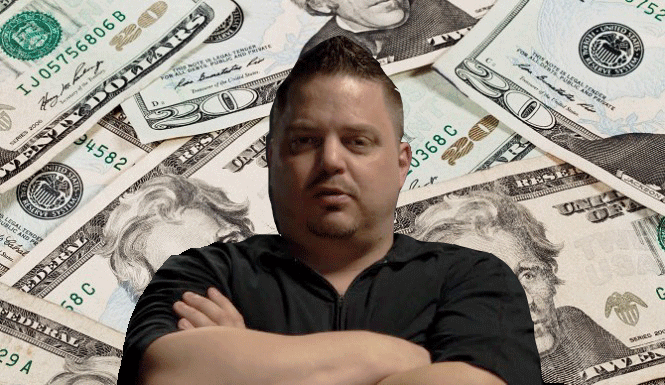January 8, 2015
Punta Arenas, Chile
Frank Bourassa was a hustler.
He’d tried every shady deal out there—from marijuana to jacked cars. This was a guy who knew how to make a quick buck.
Literally, as it turns out, when he realized one day that with each of these schemes he was aiming for the same thing: cash.
So why not skip a step and just print some himself?
After over a year of concentrated study, detailed planning, and investment in high-quality printing materials, he was able to fabricate a $20 bill that was basically indistinguishable from the real thing.
By printing $250 million of the stuff, he earned the title of being the world’s greatest counterfeiter.
Frank was caught eventually, but he managed to get away with it relatively unscathed by simply turning in $200 million in $20 notes he had printed.
At one point in history, the crime for counterfeiting was death. Today in the US it’s up to 15 years in prison.
Nonetheless, for his crimes, Frank spent merely 6 weeks in prison and paid a paltry penalty of $1,350.
Of course, the state eagerly grabbed up the $200 million that he hadn’t shifted yet along with one of the specialized printing presses.
I can’t help but chuckle at the thought that the government and Fed are using a counterfeiter’s printer to make some of the fiat currency we use today.
This should be ironic, but in fact it‘s a fitting move for the real most successful counterfeiter in the world.
The tens of billions of counterfeit dollars they printed each and every month over recent years blows Frank straight out of the water.
How can it be considered counterfeit if they are the official authorized printers of dollar bills? After all, to counterfeit is to make fake replicas of an original product, so by definition this shouldn’t apply, right?
Here’s the thing—while the cotton-blend paper, the ink and the plates might all be the same, the value behind it has been adulterated.
The paper bills they print today are merely fake replicas of the dollars that once had value.
At the start of the 20th century, the Gold Standard Act set the value of the dollar bill at 1.67g of gold. And the dollar was guaranteed to be directly convertible into gold at any point.
This link to gold is what essentially created the real US dollar.
It was only because of this real backing that anyone was willing to use the dollar in the first place. Because otherwise it was simply a piece of paper, indistinguishable from any other.
In 1933, President Roosevelt sought to gain more leeway in his manipulation of the economy, and through a series of Acts of Congress and Executive Orders he severed this link between the paper dollar and gold.
Holders of the currency had no say in the matter as suddenly the concrete value of their money was replaced with faith. Faith in the US government.
From that day, every note printed by the Federal Reserve became a fake replica of the original.
They were even so callous as to keep printing the phrase “Will Pay to the Bearer on Demand” on the face of the dollar notes for a full 30 years after this became a full-out lie.
That’s the equivalent of slapping a Gucci logo on a standard bag. Yes, a bag is a bag. But with a few extra characters one can falsely claim a much higher value.
And that, by definition, is counterfeit.








